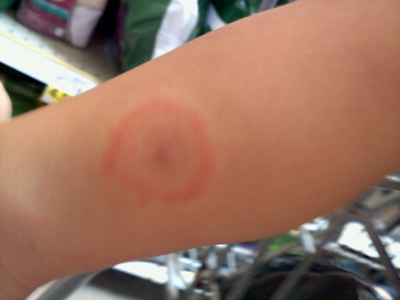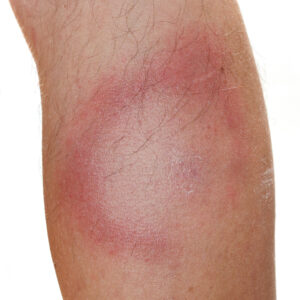Call for your appointment today 914-666-4665 | Mt. Kisco, New York

Both studies, published in 1996 and 1998, required that the participants meet the Centers for Disease Control and Prevention’s (CDC) surveillance case definition for Lyme disease. This definition requires that the erythema migrans rash be at least 2 inches in diameter.

But the incidence of an EM rash is lower in studies that are all-inclusive and do not exclude patients that fail to have a rash. For instance, only 25% of patients had an EM rash in the study which first described Lyme disease in Lyme, CT. [4]
In a study of Lyme encephalopathy, sponsored by the National Institute of Health (NIH), only 56% of patients had an erythema migrans rash. And all of the subjects had a confirmation of Lyme disease with a positive IgG Western blot test. [5]
Why is it important to have a realistic percentage of the incidence of an erythema migrans rash?
A Lyme disease patient might be denied treatment if their doctor is expecting an EM rash to diagnose the disease. And, the incidence of Lyme disease in the USA might be underestimated if we are overly reliant on the presence of an EM rash.
Related Articles:
Single dose of prophylactic of a tick bite only prevents a Lyme rash
References:
- Shapiro ED, Wormser GP. Controversies About Lyme Disease-Reply. Jama. 2018;320(23):2482-2483.
- Gerber MA, Shapiro ED, Burke GS, Parcells VJ, Bell GL. Lyme disease in children in southeastern Connecticut. Pediatric Lyme Disease Study Group. N Engl J Med. 1996;335(17):1270-1274.
- Sigal LH, Zahradnik JM, Lavin P, et al. A vaccine consisting of recombinant Borrelia burgdorferi outer-surface protein A to prevent Lyme disease. Recombinant Outer-Surface Protein A Lyme Disease Vaccine Study Consortium. N Engl J Med. 1998;339(4):216-222.
- Steere AC, Malawista SE, Snydman DR, et al. Lyme arthritis: an epidemic of oligoarticular arthritis in children and adults in three connecticut communities. Arthritis Rheum. 1977;20(1):7-17.
- Fallon BA, Keilp JG, Corbera KM, et al. A randomized, placebo-controlled trial of repeated IV antibiotic therapy for Lyme encephalopathy. Neurology. 2008;70(13):992-1003.




Thank you Dr. Cameron for that information.